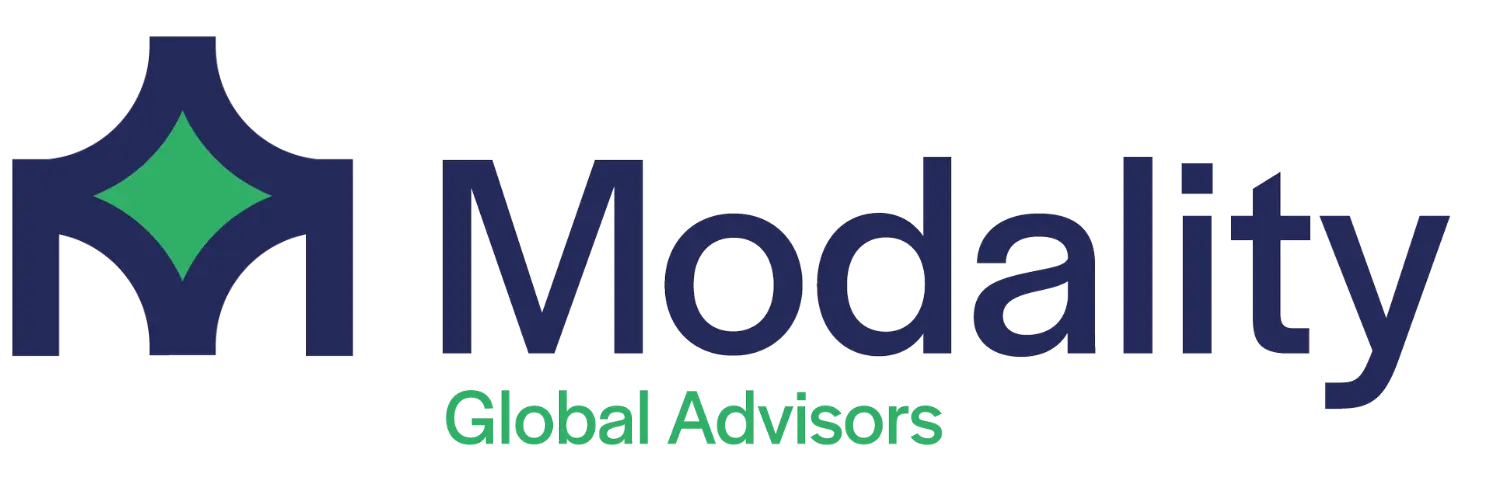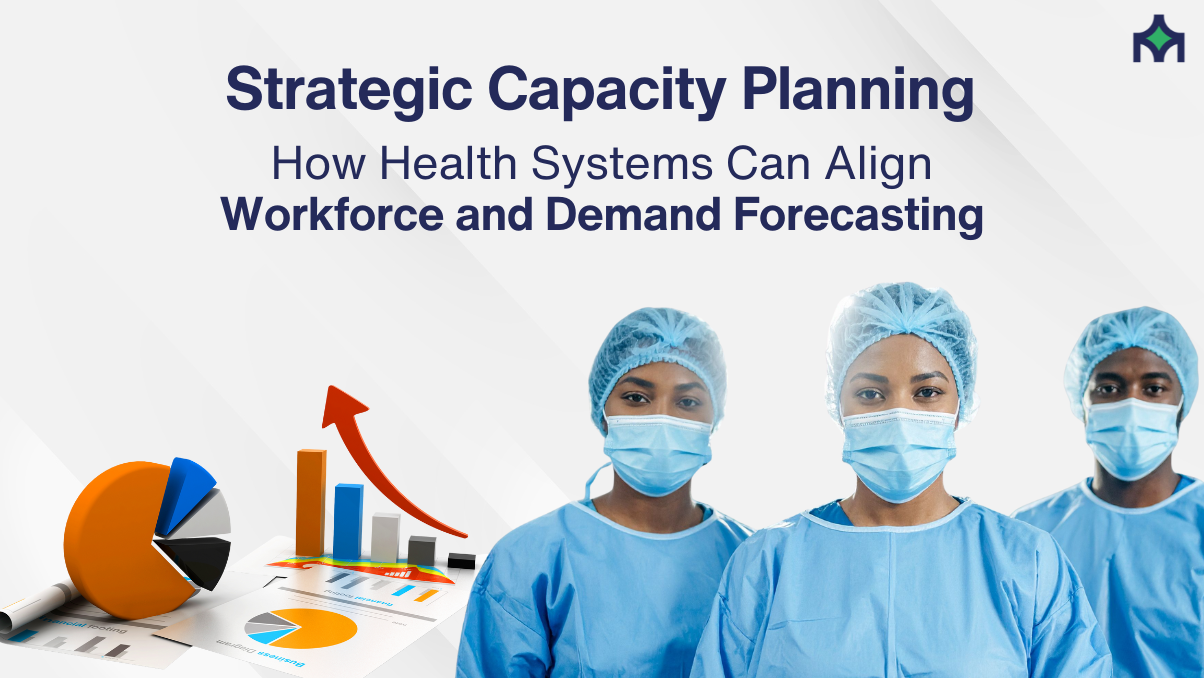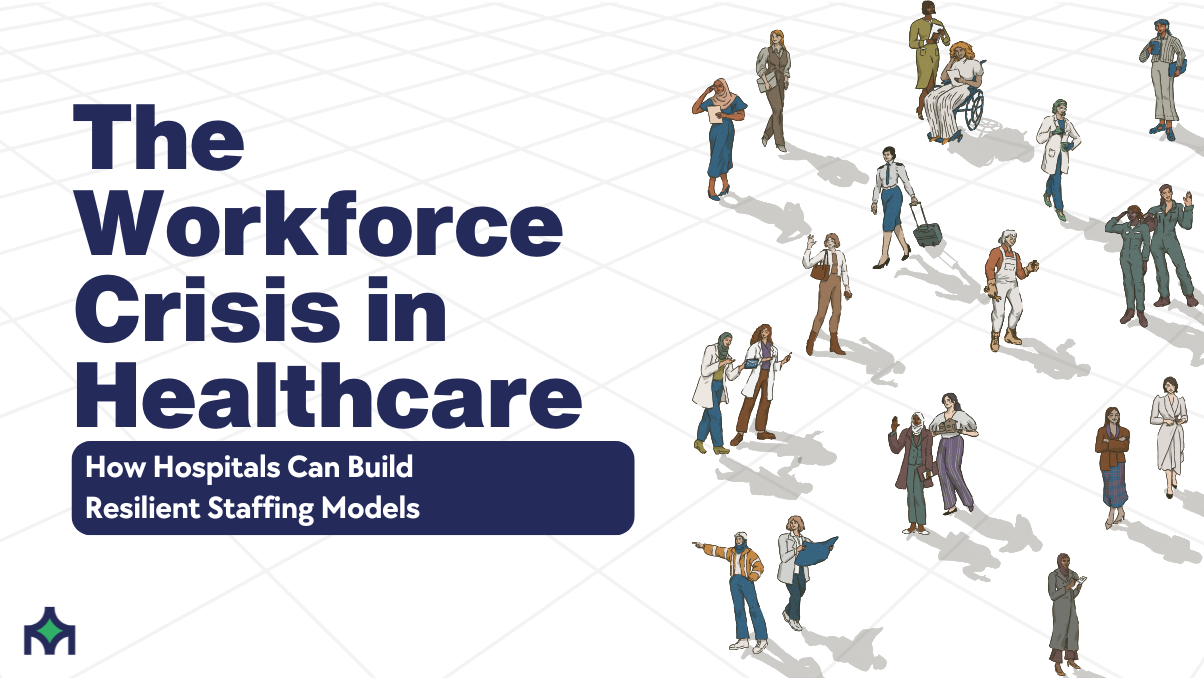Strategic Capacity Planning: How Health Systems Can Align Workforce and Demand Forecasting
Strategic Capacity Planning: How Health Systems Can Align Workforce and Demand Forecasting
Healthcare organizations worldwide are navigating one of the most complex operational landscapes in modern history. Fluctuating patient demand, persistent workforce shortages, and financial pressures are stretching hospitals to their limits. Amid this turbulence, one strategic discipline has emerged as a cornerstone of resilience—capacity planning.
Strategic capacity planning empowers health systems to balance resources with demand, ensuring that the right staff are available, at the right time, in the right place. It connects workforce management, operational analytics, and financial strategy into a unified model—helping organizations move from reactive staffing to proactive resource alignment. The ability to anticipate workforce needs before they become bottlenecks is now a defining factor in whether health systems can deliver consistent care quality, sustain financial performance, and maintain staff well-being.
The Capacity Challenge in Modern Healthcare
By 2030, the global demand for healthcare workers is projected to reach 80 million, while the available supply will only meet 65 million, resulting in a shortfall of 15 million professionals (WHO 2023). Meanwhile, the healthcare staffing market is expected to expand from USD 45.2 billion in 2025 to USD 62.8 billion by 2030 (Mordor Intelligence 2025), underscoring the growing reliance on temporary and premium labor.
These pressures manifest in familiar operational pain points:
- Misalignment between staffing and fluctuating patient volumes
- Increased overtime and contract labor costs
- Burnout and turnover among overextended staff
- Reduced responsiveness during seasonal surges or emergencies
What Strategic Capacity Planning Means
Strategic capacity planning integrates demand forecasting, workforce analytics, and operational planning into a single, continuous process. It enables organizations to model future staffing needs, identify gaps, and deploy resources more effectively across service lines.
Key elements include:
- Demand Forecasting: Using predictive analytics to anticipate patient volumes, acuity levels, and care patterns.
- Workforce Supply Modeling: Evaluating current staffing capacity, attrition rates, and skill availability.
- Scenario and Gap Analysis: Identifying where and when shortfalls will occur under various operating conditions.
- Flexible Deployment: Implementing cross-trained float pools and adaptive scheduling to balance workload fluctuations.
- Continuous Monitoring: Leveraging real-time dashboards to adjust staffing dynamically.
Best Practices for Health Systems
1. Use Predictive Analytics for Accurate Forecasting
Healthcare organizations that adopt predictive analytics significantly improve workforce alignment. The healthcare workforce management system market is projected to grow from USD 2.48 billion in 2025 to USD 5.20 billion by 2034 (Precedence Research 2025), driven by demand for smarter staffing tools.
2. Build Flexible Staffing Models
Cross-training and redeployment frameworks allow hospitals to scale staffing efficiently. Float pools reduce dependency on agency labor while ensuring continuity of care.
3. Align Workforce Skills with Strategic Growth
Emerging care models like ambulatory surgery centers and virtual care require new competencies. Planning for these skill needs now ensures smoother future transitions.
4. Integrate Workforce, Finance, and Operations Data
Workforce planning must not exist in isolation. Integrating HR, finance, and operational analytics provides a holistic view of costs, productivity, and service capacity.
5. Continuously Measure and Refine
Tracking KPIs such as staff-to-patient ratios, overtime rates, and labor cost per FTE enables continuous improvement and informed decision-making.
Why It Matters
Strategic capacity planning is essential for building organizational resilience. Health systems that excel in this area:
- Reduce labor costs by minimizing reliance on overtime and agency staff
- Enhance staff satisfaction by balancing workloads and improving scheduling predictability
- Support service growth with better workforce readiness
- Increase operational flexibility during surges or emergencies
- Protect financial margins, as labor represents up to 60% of hospital operating expenses
In short, aligning workforce planning with demand forecasting drives both operational agility and financial stability—critical pillars of success in a post-pandemic healthcare economy.
Conclusion
As healthcare systems continue to evolve, the need for strategic capacity planning has never been greater. By uniting data-driven forecasting with adaptive workforce models, hospitals can ensure that patient care, staff performance, and financial outcomes move in sync.
Sources
- World Health Organization (2023) – Health and Care Workforce in Crisis: The Global Outlook
- Mordor Intelligence (2025 – 2030)
- Precedence Research – Healthcare Workforce Management System Market Forecast (2025 – 2034)





